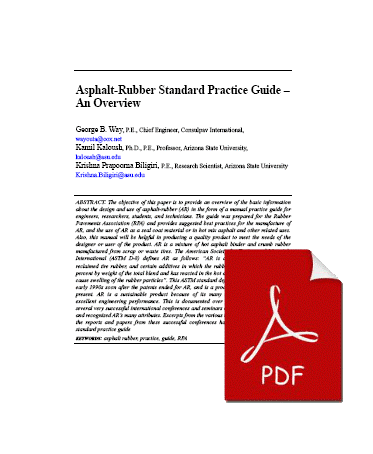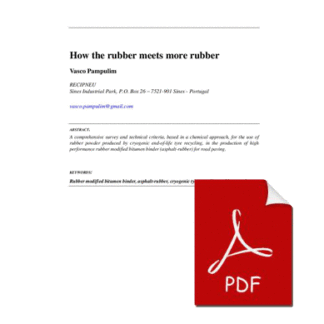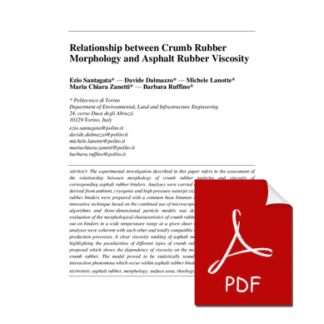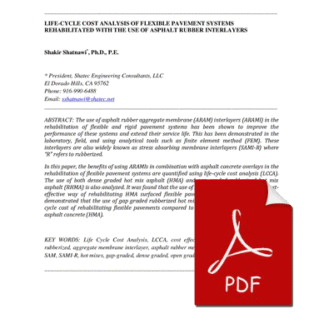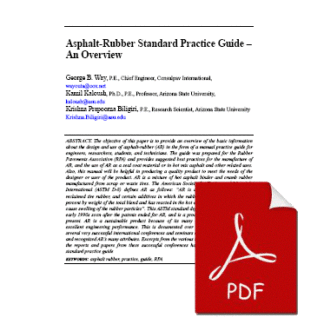Description
The objective of this paper is to provide an overview of the basic information about the design and use of asphalt-rubber (AR) in the form of a manual practice guide for engineers, researchers, students, and technicians. The guide was prepared for the Rubber Pavements Association (RPA) and provides suggested best practices for the manufacture of AR, and the use of AR as a seal coat material or in hot mix asphalt and other related uses. Also, this manual will be helpful in producing a quality product to meet the needs of the designer or user of the product. AR is a mixture of hot asphalt binder and crumb rubber manufactured from scrap or waste tires. The American Society for Testing and Materials International (ASTM D-8) defines AR as follows: “AR is a blend of asphalt cement, reclaimed tire rubber, and certain additives in which the rubber component is at least 15 percent by weight of the total blend and has reacted in the hot asphalt cement sufficiently to cause swelling of the rubber particles”. This ASTM standard definition was developed in the early 1990s soon after the patents ended for AR, and is a product in the public domain at present. AR is a sustainable product because of its many environmental benefits and excellent engineering performance. This is documented over a period of many years in several very successful international conferences and seminars on AR, which have endorsed and recognized AR’s many attributes. Excerpts from the various research studies presented in the reports and papers from these successful conferences have been synthesized into a standard practice guide.

